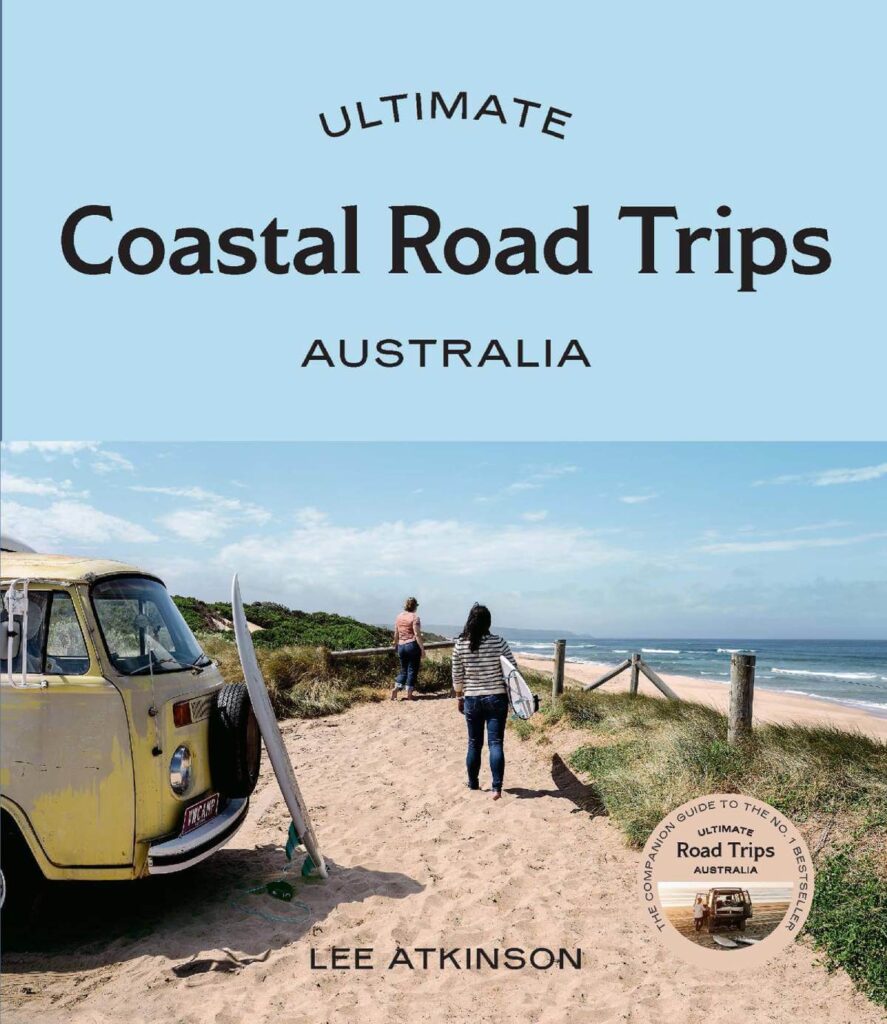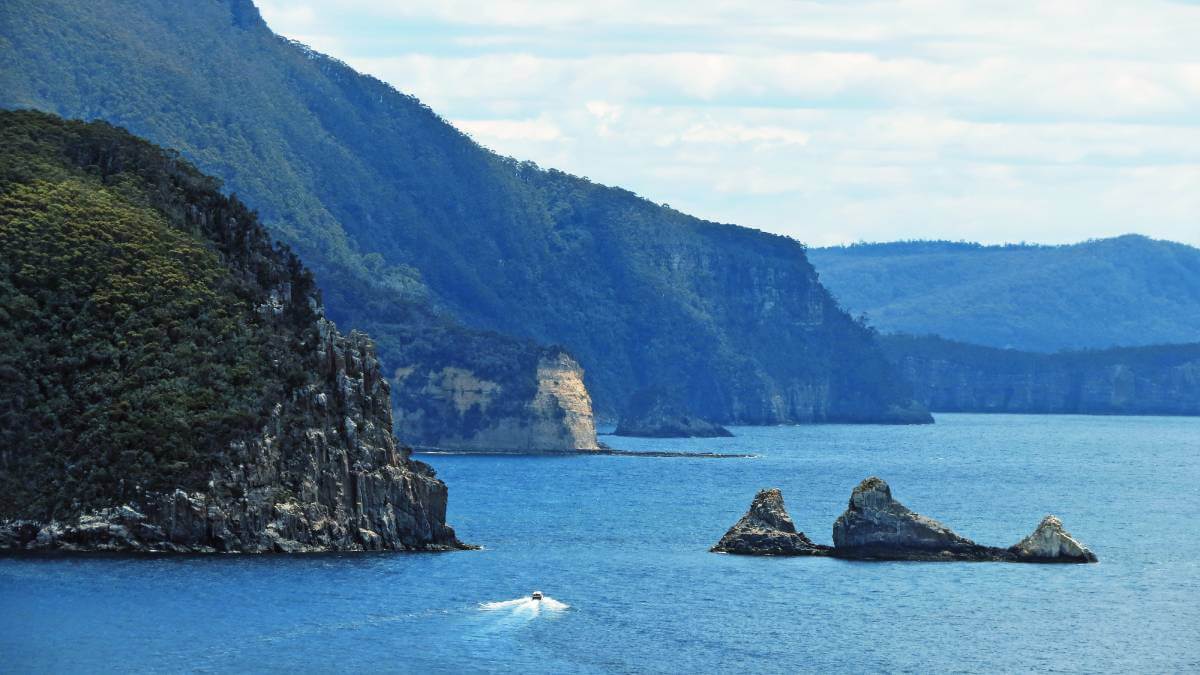Planning on a road trip soon? Here are tips from the book Ultimate Coastal Road Trips: Australia by Lee Atkinson to make your next holiday behind the wheel on Australia’s coastal roads a little bit easier and a whole lot safer.
Driving on unsealed roads
Many of the roads in coastal national parks and country areas are unsealed: they can be bumpy and dusty but unless otherwise signposted are generally fine for conventional two-wheel-drive (2WD) vehicles when conditions are dry.
After heavy rains they may take a few days to dry out, and getting stuck or bogged is never much fun. Travelling on roads that have a ‘closed road’ sign, even if you are in a four-wheel-drive (4WD) vehicle, not only damages the road for future users, but you’ll also incur a substantial fine.
Driving on the beach
Driving along an empty stretch of beach is one of life’s great pleasures, but in most cases you’ll need to get a permit from the relevant authority first, usually the local council or from national parks.
The trickiest thing about driving on beaches is planning around the tides, as quite often your beach highway can completely disappear when the tide comes in.
You’ll need a 4WD and to drop your tyre pressure to 20psi or so to avoid getting bogged, so carry an accurate pressure gauge and a quality air compressor to reinflate your tyres when you leave the beach.
Generally, you don’t need to brake on sand – sudden braking can bury the nose of the vehicle, particularly when driving in dunes.
Be aware that some driving beaches are also swimming and fishing beaches, so watch for people sitting or walking on the beach too.
If you do get into trouble in sand, a pair of recovery ramps, which you put under the wheels when you’re bogged in sand, give the tyres something to grip and, as a rule, will launch you out of trouble.
Carry a long-handled shovel for digging and a snatch strap for those moments when all else fails – all you need then is somebody else to come along to pull you out. In remote areas it pays to travel with friends or family so there are two vehicles for this reason!
Towing a caravan
Road conditions can and do change, so always check local conditions before setting out, particularly if it has been raining recently.
Be aware of your van’s height and weight – you’ll often come across low-level bridges in country areas. Before you leave home measure the height of your van or motorhome, including any rooftop air conditioners and so on, and put it on a sticker on your windscreen to remind you. Do the same with your total laden weight, as some bridges have a three-tonne limit, as do some country roads after rain.
Road closures
Some roads in national parks and outback areas can close due to seasonal weather conditions or for maintenance. National park authority websites will show park alerts for when roads – or walking tracks – are closed, and state and territory authorities will have information about other road closures.
Maps, apps and PLBs
Taking the right maps or a good sat nav is key to a successful and happy road trip – as fighting over which is the right way to go is a major cause of holiday (and marital) breakdown.
There is a range of free apps, such as Google Maps, available to help you navigate coastal roads, but don’t rely on them if you are heading away from towns, into remote areas or national parks, because phone coverage can be non-existent outside urban areas and larger towns.
Invest in a good sat nav that doesn’t rely on a phone signal such as Hema Navigator, but it pays to also carry paper maps in your car because sometimes you need to see the bigger picture, rather than just the next couple of turns.
If you’re a member, maps produced by your state automobile association (NRMA, RACV, RAC, etc) are always accurate, as are Hema maps.
If you’re camping, Wikicamps is a handy app when looking for somewhere to pitch for a night.
Hipcamp – like Airbnb for campers – is a network of campsites on private property. It’s particularly useful if you don’t fancy caravan parks, roadside rest stops or national parks, which are off limits if you’re travelling with pets.
And just as I’d never leave home without Google Maps or a sat nav, I can’t even imagine setting up camp without checking out a weather app first – life’s too short to camp in the rain.
Personal Locator Beacons (PLBs) or a satellite phone are recommended in remote areas, especially when hiking.
Being road ready
Before you leave home, give your car the 10-step once over.
- Service please – get your vehicle serviced by a licensed mechanic before you leave home.
- The good oil – engines like fresh oil, so treat your engine to a lube. And check it regularly while on your road trip to make sure it doesn’t get low.
- Keep your cool – check your radiator coolant level and top it up if necessary. If you’re heading a long way from help (away from towns), carry some spare hoses and a bottle of coolant with you.
- Power rangers – you’d be amazed how many people get stranded with a flat battery, especially if they are running portable fridges, chargers or night lights. Carry a spare and turn off appliances overnight.
- Keep the pressure on – most of us forget to check tyre pressure. Carry, and use, a tyre gauge. Before you leave, check the tread and make sure you have a spare in good condition.
- The right tools – a basic tool kit should include a jack, jacking plate and wheel-replacement tools, spare tyre, fire extinguisher, emergency fuel supplies if heading off the beaten track, engine oil, coolant, jumper leads and spare radiator hoses and fan belts and the tools you’ll need to replace them.
- Pack the essentials – never travel without a first-aid kit, always carry extra drinking water and plenty of sunscreen.
- Pack it in – don’t overload your car or carry unrestrained items in the back seat – even a flying book can cause serious injury in a crash. If it won’t fit in the boot, don’t take it. If you’re travelling in a wagon or 4WD, install a cargo barrier.
- Play it safe – make sure your vehicle (car and caravan) and home insurance is up to date. Cancel any home deliveries, get the neighbours to collect your mail, organise who will look after your pets (if you have them), and install a timer switch on a light or two (or get a reliable friend or relative to house sit).
- Be prepared – join your state auto club before you leave home, such as the RAA or NRMA, to help you out in the event of a vehicle breakdown.

This is an edited extract from Ultimate Coastal Road Trips: Australia by Lee Atkinson. Published by Hardie Grant Explore, available in stores nationally now, $45.
Do you enjoy a road trip? Do you have any tips to add? Why not share your experience in the comments section below?
Also read: Sydney to Canberra road trip

